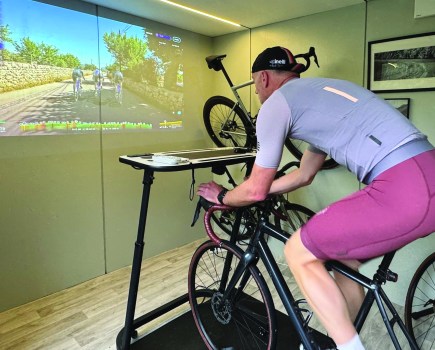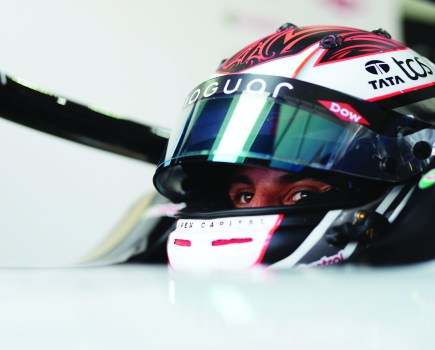British adventurer and extreme athlete Ash Dykes is setting off on his latest expedition – ‘Uncharted: Suriname’ – to map the course of the Coppename River, in the rainforest-covered South American nation of Suriname.
The 33-year-old is flying by helicopter into the jungle with two wildlife experts and a cameraman, each carrying their supplies and an inflatable canoe. They will then find the source of the river and follow it for 400 kilometres, through the thick jungle to the Atlantic Ocean.
This is Dykes’ fourth major expedition. In the past ten years he has walked solo unsupported across the Gobi Desert; across Madagascar, via its eight highest peaks; and 4,000 miles along the course of the Yangtze River.
During previous expeditions he has nearly died from malaria, been held at gunpoint, hidden from armed bandits, crossed crocodile-infested rivers, been bitten by spiders and leeches, and survived landslides, rapid wolves, bears, dog attacks, and blizzards.
Why have you chosen to map this river in Suriname?
No one knows exactly where the source of the Coppename River is. It has been mapped by satellite, but that’s unreliable as so much is covered by thick rainforest. We hope to map it accurately and pass the information to Suriname’s mapping authority. We’re also climbing Suriname’s two highest mountains in the fastest time possible, attempting to set a Guinness World Record.
What are you most apprehensive about?
If there’s no landing spot for our helicopter, we’ll have to jump into a river. Keeping my team together will be very difficult. During the Yangtze expedition I had ten members evacuated for a number of reasons: sickness, injury, fear of wildlife. The intensity is going to be ramped up on this expedition. What if someone is clumsy and stands on the back end of a snake or rubs up against the wrong plant? Don’t forget the jaguars, caymen, electric eels, piranha, stingrays, bullet ants, botflies, hornets, candiru fish.
The stingrays are what I’m most nervous about. We have to be careful getting in and out of our boats. A stab in the leg and you can’t walk. The coral snakes might bite you, too. Then there’s the wandering spider, which can cause a painful, involuntary erection if it bites you! In all those cases, you have to get evacuated.
The communities in the interior of Suriname say there are uncontacted tribes which come in occasionally and cause havoc. So who knows? We don’t want to encroach.
Will it be easy to evacuate someone if they get injured?
We have satellite comms and GPS. But the helicopter pilot would have to find a place to land. They can’t winch down because it’s not a military helicopter. They could land in a clearing or on a sandbank beside the river. An evacuation would take six hours minimum, but up to 48 hours if there’s a storm. So if we’re bitten by a coral snake, we can only sit back and enjoy the sunset.
You must have endured some hair-raising experiences on previous expeditions?
I’ve had too many near deaths. The worst was in south of Madagascar, where there were hostile bandits and military. We once came across a drunken military officer – a very nasty guy. He had an AK47 on a strap across his shoulder. He was pointing it at us and the strap kept slipping from his shoulder. He was full of hate. A crowd gathered and some of the guys wanted to fight me. Then two sober officers came along and asked us for money.
Then we came across a village that had the bubonic plague. There was an eerie atmosphere in that community. They fed us but we got food poisoning. Although I was taking anti-malaria pills, I couldn’t keep them inside me. A few days later I contracted the worst form of malaria: falciparum malaria. It usually kills you in 24 hours, but I survived five days to reach medical evacuation. The doctor said a few hours later and I would have slipped into a coma.
Other hairy situations included being bitten by a spider and having to ply leeches off me in Madagascar. In the Yangtze I was once hunted by a pack of wolves for two days. We were later told a local had been killed by the same pack a few days earlier.
What pushed you into this life of adventure?
In my early days I was very sporty and competitive. I loved team and combat sports. At college I did a diploma in outdoor education course. I took a lot of trips into Snowdonia. I used to watch David Attenborough shows and I realised I didn’t want to sit in the living room – I wanted to get out there and actually do it. So I worked for two years in a chip shop, as a waiter, and as a lifeguard. Then I sold my little Renault Clio and set off to travel. Everyone else I knew was going to uni or into the military.
I travelled in Asia and Australia. Crossing from Thailand to Myanmar, I came across a Burmese hill tribe who took me under their wing and taught me how to survive in the jungle. Later, in Thailand I was earning money as a scuba instructor and by fighting in Muay Thai kickboxing fights for cash.
My granddad was an influence. He was a wild man. He lived in Pakistan for 21 years. In Karachi, he lived in a shed on someone’s roof. He was an environmentalist, showing children in schools how to plant trees. He lives in North India now. I’ve only ever met him five times in my life. He’s 6ft 5in, skinny, with a big beard. My curiosity and fascination for the planet must come from him.
I now have outdoor sports qualifications: every level of scuba diving; I have power boat licences. I can wakeboard, I can surf; I have winter mountaineering, avalanche awareness, desert, jungle and mountain survival. Also licences for paragliding, para-motoring and skydiving.
Expedition fitness: how Ash Dykes trains in the weeks leading up to adventure
Muay Thai
“I practise muay Thai three times a week for one to two hours,” he says, “with MMA fighter Victor Espinosa at his training centre in Battersea, south London. It includes kick boxing training and a full-body workout. Then I jump in the ice bath.”
Outdoor gym
Dykes uses an outdoor bar park in Battersea Park five times a week. His regular circuit involves 10 sets of 15 pull-ups, 15 push-ups and 10 dips with very little recovery.
Running
For cardio, Dykes runs 5-10k in Battersea Park five or six days a week.
Weights
In the gym, Dykes lifts weights three times a week, primarily to build functional strength.
Ash Dykes’ ‘Uncharted: Suriname’ expedition is sponsored by animal charity Free The Wild. Find out more at ashdykes.com







